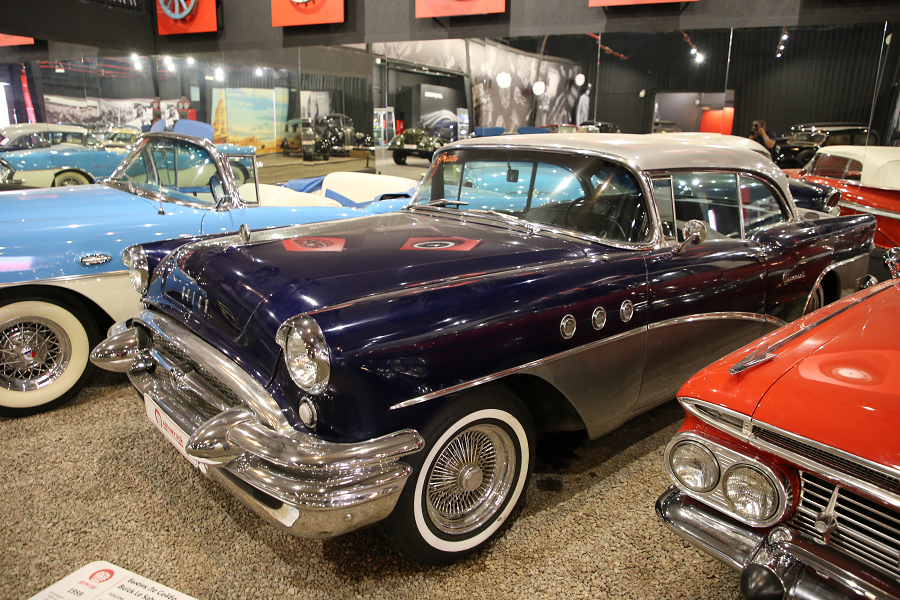Buick Special (series 40)
The Buick Special was an automobile produced by Buick. It was usually Buick’s lowest-priced model, starting out as a full-size car in 1936 and returning in 1961 (after a two-year hiatus) as a mid-size. The Special was built for several decades and was offered as a coupe, sedan and later as a station wagon. When GM modernized their entry level products in the 1960s, the Special introduced the modern Buick V6 that became a core engine for GM for several decades and lived on in upgraded form until 2006.
Halfway into the 1949 model year, the Specials received all-new bodywork to include a dramatically styled grille where nine grille bars also served as bumper guards and extended over the front bumper, and the first fully postwar design for the series. New was also the 40D-series, a better equipped version called the Special DeLuxe. The engine remained the 248 cu in (4.1 L) which had been used since 1937, but for 1951 this was replaced by the larger “Fireball” straight-eight. A two-door hardtop coupe was also new for 1951, but the unusual grille was revised with the grill bars shortened. The 1954 Specials had an all-new body and chassis, much wider and lower, and were now equipped with the all-new, more powerful “Fireball” V8 engines. In 1953 The Buick-Berle Show introduced product placement commercials on TV, and later in 1955 The Honeymooners was one of the sponsors.
Introduced in the middle of the 1955 model year the four-door Buick Special Riviera (along with the Century Riviera, the Oldsmobile 98 Holiday, and the 88 Holiday) were the first four-door pillarless hardtops ever produced. By then, the Buick Special was one of America’s best selling automotive series. For 1956 the larger 322 cu in (5.3 L) V8 engine was shared with the rest of the range, although it was replaced by the bigger, 250 hp (186 kW) 364 V8 for 1957.
This year also brought all-new bodywork, as well as a four-door hardtop station wagon called the Buick Riviera Estate. The 1957 wheelbase remained 122 inches. In the June, 1957 issue of Popular Mechanics, the Special was rated with a 0-60 mph time of 11.6 seconds, fuel economy of 17.4 mpg‑US (13.5 L/100 km; 20.9 mpg‑imp) at 50 mph (80 km/h), and ground clearance of 6.9 in (175 mm). 1958 brought the most chrome yet and twin headlights, as the car grew longer and wider, albeit on an unchanged chassis.
1949-1957 Buick Specials had three VentiPorts on each side while more senior Buicks (with the partial exception of the Buick Super, which switched from three to four in 1955) had four. Earlier versions had a “Sweepspear” inspired character line alongside the body, while later versions had the “Sweepspear” moulding attached to the side of all models. GM renamed the Buick Special the LeSabre for the 1959 model year, taking the name from the 1951 Le Sabre concept car.

1955 Buick Special 4-door Sedan
Assembly: Flint (Michigan, USA)
Years of production: 1949—1958
Length: 5293 mm
Width: 1900 mm
Height: 1483 mm
Engine: 8 cylinders; 5965 cm³
Power: 250 HP
Max speed: 180 km/h
Fuel consumption: 21 l/100 km
Weight: 1793 kg
Assembly: Detroit (USA)
Year: 1914—1921
Production: 1,000 units
Engine: 4 cylinders; 2680 cc
Power: 33 HP
Max speed: 70 km/h
Weight: 839 kg
World cars museum (Moscow, Russia) and Rahmi Koç museum (Istanbul)

See also Transport blog
See also Cars blog
See also Motorcycles blog
See also Buses blog
See also Shipbuilding blog
See also Motors and Engines blog
See also Trains and railways blog
See also Trucks and Cargo Vehicles blog
See also Tractors and Special Equipment blog
See also Tanks and Armored Vehicles
See also Airplanes blog
See also Helicopters blog
See also Artillery, Missiles and Rockets blog
See also Bicycles blog















